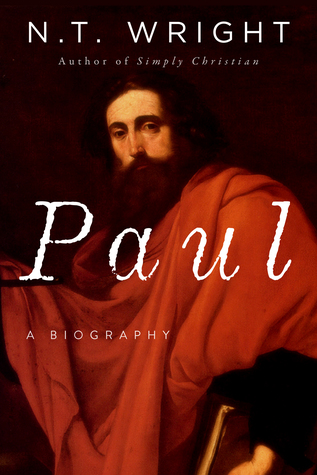More on this book
Community
Kindle Notes & Highlights
Hope could be, and often was, a dogged and deliberate choice when the world seemed dark. It depended not on a feeling about the way things were or the way they were moving, but on faith, faith in the One God.
Love and grief are very close, especially in warm, passionate hearts. Saul shrank from neither. He wrote constantly of love—divine love, human love, “the Messiah’s love.” And he constantly suffered the grief that went with it.
Others have supposed that he simply chose a name better known in the wider non-Jewish world, shared even by the governor in the present story. Like most Roman citizens, Saul/Paul would have had more than one name, and it is quite possible that he already possessed the name “Paul” and simply switched within available options. It is worth noting as well, however, that in Aristophanes, known to most schoolboys in the Greek world, the word saulos was an adjective meaning “mincing,” as of a man walking in an exaggeratedly effeminate fashion. One can understand Paul’s not wishing to sport that label
...more
Stoics.
He had nearly achieved it. Becoming emperor in his middle twenties, Caligula had become increasingly erratic and megalomaniacal, insisting on divine honors in Rome itself, something his predecessors Augustus and Tiberius had been careful never to do. One thing stood in his way: the permission given to the Jews to worship their own God in their own way. He planned to do to Jerusalem what Antiochus Epiphanes had done two centuries earlier, only more so; he would convert the Jerusalem Temple into a great shrine focused on a giant statue of himself. He would be the divine image in the holy place.
One God, he prefers to do so by invoking and praying to this God, declaring his loyalty to his kingdom: For us there is one God, the father, From whom are all things, and we live to him and for him; And one Lord, Jesus the Messiah, Through whom are all things, and we live through him.35 This translation is a bit wooden, but longer paraphrases do not bring out the remarkable way in which Paul has adapted the Shema (“Hear, O Israel: the LORD our God, the LORD is one”) by making “Lord” refer to Jesus and “God” refer to “the father.”
It isn’t difficult to imagine that being chanted, even in English, but when we put it back into Greek we can envisage a rhythm being set up: Megalē hē Artemis Ephesiōn! Megalē hē Artemis Ephesiōn! Emphasize every other syllable, starting on the first, and imagine tens of thousands chanting it together, punching the air in time. We imagine Paul, restrained by his friends, listening to the chant. He would be praying, of course. If you are the sort of person who sings hymns in prison at midnight, you are certainly the sort of person who goes on praying when there’s a deafening riot happening down
...more
Paul believed that when grace was at work, the human agents themselves were regularly called upon to work hard as a result, not least in prayer. He says this of himself.14 The Creator works in a thousand ways, but one central way is through people—people who think, who pray, who make difficult decisions, who work hard, especially in prayer. That is part of what it means to be image-bearers. The question of divine action and human action is seldom a zero-sum game. If the worlds of heaven and earth have rushed together in Jesus and the spirit, one should expect different layers of explanation to
...more


